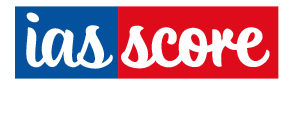


Instruction:
- There will be 2 questions carrying 10 marks each. Write your answers in 150 words
- Any page left blank in the answer-book must be crossed out clearly.
- Evaluated Copy will be re-uploaded on the same thread after 2 days of uploading the copy.
- Discussion of the question and one to one answer improvement session of evaluated copies will be conducted through Google Meet with concerned faculty. You will be informed via mail or SMS for the discussion.
Question #1. What is Satellite Internet Services technology? Throw light upon various applications and challenges associated with this technology.
Question #2. What is Quantum key distribution (QKD) and how does it work? Discuss its commercial applications and key challenges.
(Examiner will pay special attention to the candidate's grasp of his/her material, its relevance to the subject chosen, and to his/ her ability to think constructively and to present his/her ideas concisely, logically and effectively).
STEPS & INSTRUCTIONS for uploading the answers
Step 1 - The Question for the day is provided below these instructions. It will be available at 7:00 AM.
Step 2 - Uploading of Answers : Write the answer in A4 Sheet leaving proper margins for comments and feedback and upload the PDF in MY ACCOUNT section. Click on the option of SUBMIT COPY to upload the PDF.
Step 3 - Deadline for Uploading Answers: The students shall upload their answers by 7:00 PM in the evening same day. The first 50 copies will be evaluated.
Step 4 - Feedback : Mentors will give their feedback for the answers uploaded. For more personalised feedback, join our telegram channel by clicking on the link https://t.me/mains_answer_writing_cse . A one-to-one session will be conducted with the faculty after copy evaluation in 72 Hrs.
Model Answer
Question #1. What is Satellite Internet Services technology? Throw light upon various applications and challenges associated with this technology.
Approach:
- The question requires analysis of Satellite Internet Services technology
- Contextually introduce by explaining the meaning of is Satellite Internet Services technology
- Highlight the application of satellite internet services and explain the challenges satellite Internet must address for take off
- Conclude with the way forward
Hints:
Satellite Internet, which works similarly to satellite TV, is a wireless connection spread across satellite dishes located both in space and on the Earth. It provides remote areas of the planet with easy access to communication networks to keep people connected and give access to up-to-date information and communication systems. Not all places on the Earth are able to establish various types of land-based internet connections like broadband, fiber optics, cable internet, etc.
Hughes Communications India, a joint venture entity of US-based Hughes Network Systems and Indian telecom operator Bharti Airtel, recently announced the launch of its first high throughput satellite (HTS) broadband internet service in the country. The technology is expected to drive the next generation of innovation and technological advancements while ensuring that no corner of the country is left disconnected.
Application of satellite internet services
- High speed home anoffice internet connectivity
- Disaster management applications
- Inflight Wi-Fi connectivity for commercial aviation and private jets
- Education and infrastructure development projects in rural areas of developing nations
- Military forces can make use of satellite connectivity during their operations in remote areas
- Researchers and scientists can use satellite internet in arctic region and oceans
- Internet connectivity for Ships and boats
- Emergency and safety warning system for aircrafts and ships
- Media live broadcasting
- Future Internet of Things (IoT) applications
- Weather broadcasting stations in high altitude mountains
- Long distance transportation vehicles and trucks
The challenges satellite Internet must address for take off
- Very densely packed constellations of LEO systems are a cause for concern on account of the space debris that those systems leave behind. The latest figures related to space debris, provided by the European Space Agency, show some 28,210 debris objects are already circling our planet.
- Many systems are designed to operate in the Ka band which poses challenges with things like “rain fade”, which operators will want to avoid. If patches of bad weather can disrupt connectivity, satellite-based connectivity might not be the solution people hope it will be in some regions.
- Owing to their lower height, their signals cover a relatively small area. As a result, many more satellites are needed in order to reach signals to every part of the planet.
- Low Speed and High Latency in comparison to fiber optic cables.
- High Cost as compared to wireless cellular networks and others,
- Not compatible for VPN Services. A VPN gives online privacy and anonymity by creating a private network from a public internet connection.
- Regulation Issues: During the days of the Sputnik and Apollo missions, governments dominated and regulated space-based activities. However, today, the balance of power has shifted from countries to companies. As a result, there are questions related to who regulates these companies, especially given the large number of nations that contribute to individual projects. It makes the regulatory framework complicated.
Conclusion:
Due to increasing demand in many areas requires connectivity, satellite internet technology has a huge potential to grow in the future. Satellite internet services will bridge the existing digital divide in India. The technology will help connect the rural and remote parts of the country that are tough to reach through wiry cables or microwave signals coming from towers.
Question #2. What is Quantum key distribution (QKD) and how does it work? Discuss its commercial applications and key challenges.
Approach:
- Introduce by defining Quantum Key Distribution
- Explain how does QKD works
- Discuss the Advantages and applications
- Then highlight the Key Challenges in QKD
- Conclude with the way forward
Hints:
Quantum Key Dynamics is a mechanism to develop secure communication. It utilises a cryptographic protocol that involves components of quantum mechanics. Through this technology, two communicating sides come up with different random secret keys which are known exclusively to them. Only they can use it to encrypt and decrypt messages, thus achieving highly-secure communication.
How does it work?
- QKD works by transmitting millions of polarized light particles (photons) over a fiber optic cable from one entity to another. Each photon has a random quantum state, and collectively all the photons create a bit stream of ones and zeros.
- When the photons arrive at the endpoint, the receiver uses beam splitters (horizontal/vertical and diagonal) to “read” the polarization of each photon. The receiver does not know which beam splitter to use for each photon and has to guess which one to use.
- After the receiver tells the sender which beam splitter was used for each of the photons in the sequence they were sent, the sender then compares that information with the sequence of polarizers used to send the photons.
- The photons that were read using the wrong beam splitter are discarded, and the resulting sequence of bits becomes a unique optical key that can be used to encrypt data.
Advantages and Applications:
- Future-proof communications: This does not mean that a QKD system will never be hacked, but rather that communications secured via QKD cannot be hacked after the communication has happened: either the hacking happens in real-time or it does not happen at all.
- Boost to Start ups: The technology would help many start-ups and medium-sized enterprises in the field of quantum information.
- Detect eavesdropping: It is used to detect eavesdropping. This is due to the fact that it is not possible to copy the data encoded in quantum state. If someone tries to read such encoded data then quantum state changes the existing state.
- Strengthens the Cyber security Field: It encourages multidisciplinary collaboration amongst information theorists, engineers, cryptography experts, security professionals, and physicists that may not occur otherwise. Establishing these types of interactions is critical for advancements in several cyber related fields such as quantum communication, quantum sensing, and quantum computing.
Key Challenges associated with QKD:
- Integration of the QKD System into the current infrastructure : For the time being, it is difficult to implement an ideal infrastructure for QKD. In theory, QKD is perfectly secure, but in practice, flaws in tools such as single-photon detectors generate many security vulnerabilities.
- Distance Photons can travel: The distance that modern fibre optic cables can convey a photon is typically limited. This range is commonly seen to be upward of100 kilometres.
- Use: QKD assumes that a classically authenticated channel of communication has already been established. This suggests that one of the participating users has most likely already exchanged a symmetric key, resulting in a sufficient level of security. Without QKD, a system can be made sufficiently safe by using another advanced encryption standard. However, as the use of quantum computers grows, the possibility of an attacker utilizing quantum computing's ability to crack current encryption methods rises, making QKD more relevant.
Conclusion:
There is an urgent need to transition the world’s communication systems to quantum-safe methods. Government support for QKD in particular is crucial while the technology moves from research and development to commercialisation. Sectors with long-term security needs, including government and military, stand to benefit from the unique advantages of QKD.
Technology means the application of science. That is, the understanding that we developed from studying science is used to develop such products which are useful for humans. That means technology helps us in our everyday life. For example, the development of vaccines has helped us to handle situations created by various infections. And hence for UPSC as well, applications of technological development have remained an important topic on which several questions have been asked.
Through this theme, we will understand how to prepare for such application-based questions. Which, three things are needed:
With these 3 points, it is possible to write better answers for such questions which are related to the applications of technological developments in our everyday life.


